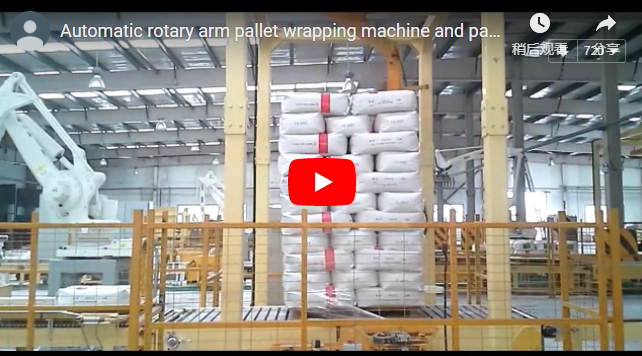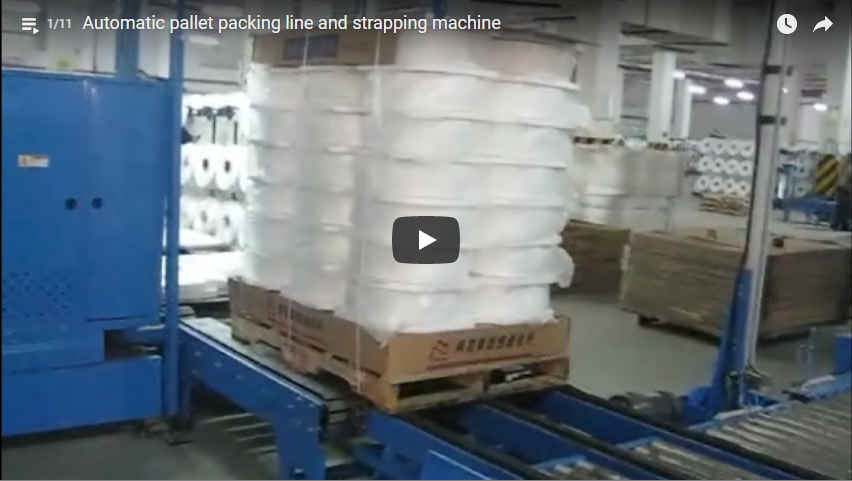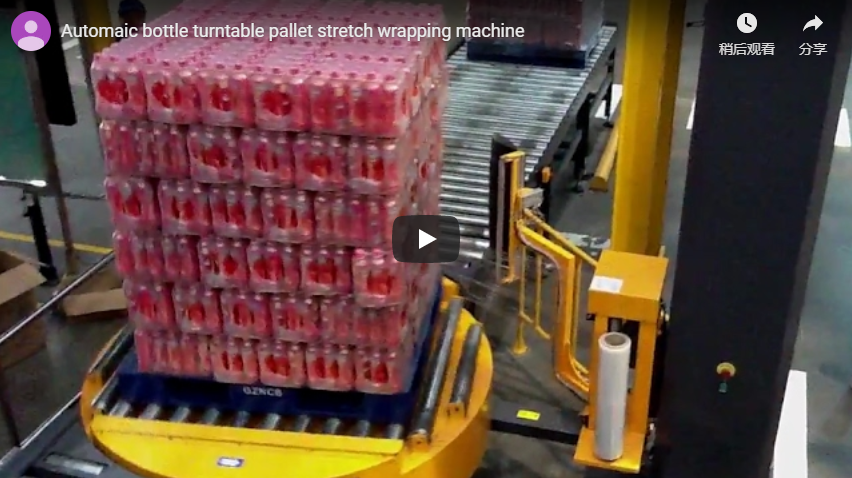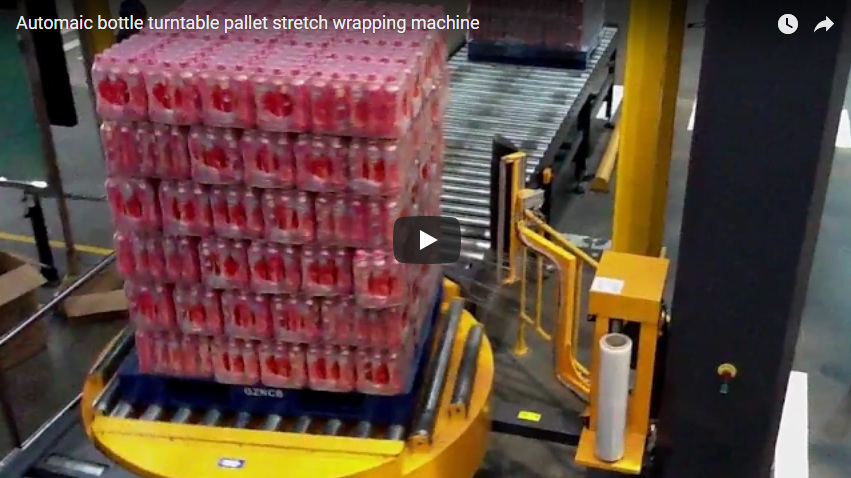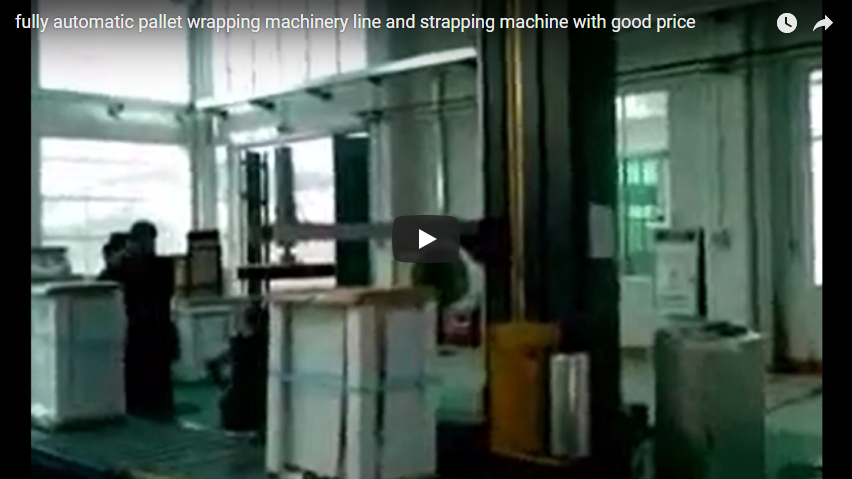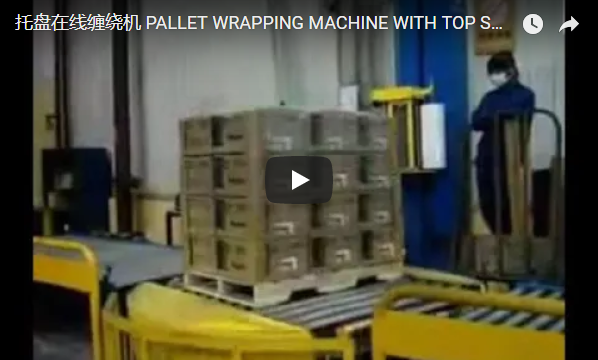Optimizing End-of-Line Packaging: A Technical Look at Automated Pallet Wrapping Lines with Conveyors
In modern logistics and high-throughput production environments, efficient and reliable end-of-line packaging is paramount. Manual or semi-automatic pallet wrapping processes often become bottlenecks, struggle with consistency, and pose ergonomic challenges. Fully automated pallet wrapping lines, integrating wrapping machines with conveyor systems, represent a significant step forward in addressing these issues. This article delves into the technical aspects, operational benefits, and key considerations of these sophisticated systems, exemplified by solutions like those offered by FHOPE.
Video demonstrating an example of a fully automatic pallet wrapping line with integrated conveyors.
1. System Overview: The Automated Wrapping Process
A typical fully automatic wrapping line seamlessly integrates pallet transport and stretch wrapping:
- Infeed Conveyor: Palletized loads arrive, often from upstream processes like palletizers or automated guided vehicles (AGVs). Roller or chain conveyors are commonly used, sometimes featuring accumulation zones to buffer pallets and ensure continuous operation.
- Pallet Detection and Positioning: Sensors (typically photoelectric) detect the approaching pallet and signal the conveyor to stop it precisely within the wrapping zone. Advanced systems may use sensors to identify pallet dimensions (L x W x H) for automatic program selection.
- Wrapping Cycle: Once positioned, the wrapping machine takes over. Depending on the design (turntable or rotary arm), either the pallet rotates on a platform, or a wrapping arm orbits the stationary pallet. The film carriage dispenses the stretch film, moving vertically to cover the entire height of the load. Key parameters like film tension, pre-stretch ratio, top/bottom wrap counts, and overlap are precisely controlled by the PLC based on pre-programmed recipes.
- Film Cut and Seal: Upon cycle completion, an automated mechanism clamps, cuts, and seals (often using heat or pressure) the film tail to the load, ensuring a clean finish and preventing unraveling.
- Outfeed Conveyor: The securely wrapped pallet is automatically transferred out of the wrapping zone onto an outfeed conveyor, ready for pickup by forklifts, AGVs, or further automated transport to storage or shipping docks.
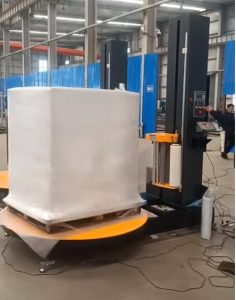
pallet stretch wrapping machine with weighing scale 2. Key Technical Components and Features
The performance and reliability of an automated wrapping line hinge on the specification and integration of its core components:
- Conveyor System:
- Type: Roller conveyors (gravity or powered), chain conveyors (suitable for non-standard pallets or heavier loads).
- Speed: Variable speed drives (VSDs) allow synchronization with upstream/downstream equipment.
- Integration: Must seamlessly connect with existing lines and communicate status (pallet present, ready to receive, etc.).
- Wrapping Machine:
- Type: Turntable (pallet rotates) or Rotary Arm (arm rotates around stationary pallet – ideal for unstable or very heavy loads).
- Film Carriage: Power pre-stretch system is critical for film economy. Ratios of 250%-300% are common, significantly reducing film consumption compared to manual wrapping. Look for easy film loading mechanisms.
- Control System: PLC-based control (e.g., Siemens, Allen-Bradley) with an HMI (Human-Machine Interface) touchscreen for recipe management, parameter adjustment, diagnostics, and operational status.
- Sensors: Pallet height detection (often photoelectric or ultrasonic), film break sensors, safety interlock sensors.
- Customization Options:
- Automatic top sheet dispenser for dust/water protection.
- Integrated weighing scales.
- Roping device to create a reinforcing band of film.
- Various safety guarding levels (fencing, light curtains, area scanners) to meet specific plant requirements (e.g., CE, OSHA standards).
3. Operational Advantages and ROI Considerations
Investing in a fully automated wrapping line yields tangible benefits:
- Increased Throughput: These systems can consistently wrap a high volume of pallets per hour (e.g., 30-90+ PPH depending on configuration and load size), significantly exceeding manual capabilities.
- Consistent Load Containment: Automated control ensures every pallet is wrapped according to specification, improving load stability, reducing product damage during transit, and enhancing safety. From experience, inconsistent manual wrapping is a major source of transit damage claims.
- Optimized Film Usage: Power pre-stretch technology drastically reduces film consumption per pallet, leading to significant material cost savings and a reduced environmental footprint. Calculating the payback based on film savings alone is often a key justification metric.
- Labor Optimization: Automating the wrapping process frees up personnel from a repetitive, physically demanding task, allowing them to be redeployed to more value-added activities. It also reduces ergonomic risks.
- Enhanced Safety: Fully guarded systems with interlocks minimize operator interaction with moving machinery, improving overall plant safety.
- Process Integration: These lines are designed to integrate smoothly into larger automated logistics or production systems, enabling data exchange (e.g., pallet ID, wrap status) and contributing to smart factory initiatives.
4. Selecting the Right System: Key Considerations
When specifying an automated wrapping line, engineers and operations managers should consider:
- Required Throughput: Match the machine's capacity to current and projected peak demand.
- Load Characteristics: Consider the range of pallet sizes, weights, stability, and shapes to be handled.
- Film Specifications: Determine the appropriate film type, thickness, and required pre-stretch capability.
- Operating Environment: Factor in space constraints, temperature, dust levels, and required safety standards.
- Integration Needs: Define communication protocols (e.g., Ethernet/IP, ProfiNet) required for integration with other plant systems (MES, WMS).
- Supplier Support: Evaluate the manufacturer's technical support, service availability, and spare parts provisioning. FHOPE, for instance, provides such integrated solutions tailored to specific client needs.
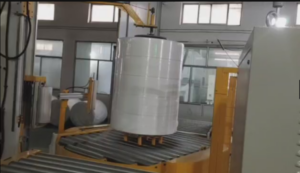
coil and roll stretch wrapping machine 5. Conclusion
Fully automatic pallet wrapping lines with integrated conveyors are essential components of modern, efficient packaging operations. By combining automated transport and precisely controlled stretch wrapping, they deliver significant improvements in throughput, consistency, cost-efficiency, and safety. While representing a capital investment, the rapid payback through film savings, labor optimization, and reduced product damage makes them a compelling proposition for companies handling significant pallet volumes. Careful consideration of technical specifications and integration requirements ensures the selected system delivers optimal performance and contributes effectively to streamlined end-of-line processes.
For more detailed information on specific stretch wrapping solutions:
https://www.fhopepack.com/Stretch_wrapping_machine.html
Contact for inquiries:
info@fhopepack.com

